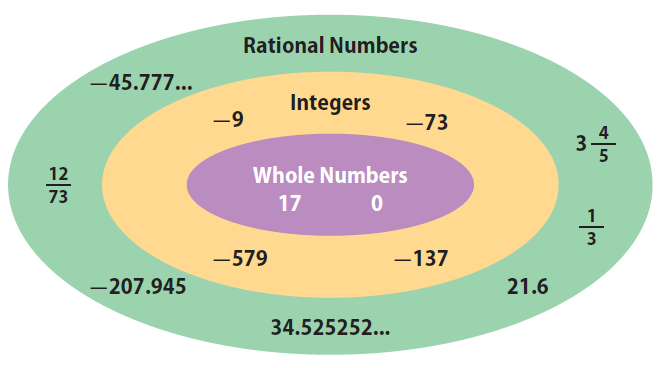
Last Updated on September 27, 2023 by Surender Kumar
Numbers play a pivotal role in our daily lives, from measuring ingredients for a recipe to calculating distances. Among these, the realm of rational numbers stands out as a fundamental concept in mathematics.
Diving deeper, understanding the operations with these numerical values—addition, subtraction, multiplication, and division—can provide one with greater numerical literacy. This post delves into the nitty-gritty of these operations.
Table of Contents
Understanding the Basics
Before jumping into the main operations, it’s essential to understand what constitutes such numbers. These are values that can be written as the quotient or fraction p/q where p and q are integers, and q is not equal to zero. In simpler terms, any number that can be expressed as a fraction belongs to this category. They lie in contrast to their counterparts, rational and irrational numbers.
This foundational knowledge sets the stage for performing arithmetic with these figures. Interestingly, the world around us is filled with them, from the savings in our bank account to the measurements in our favorite recipes. Recognizing the distinction between these and their irrational peers can also help in solving many real-world problems.
Addition of Rational Figures
To add two or more of these figures, one must first ensure they have a common denominator. Once this is achieved, simply add the numerators while keeping the denominator constant.
For instance, when adding 1/4 and 3/4, since both fractions already have a common denominator, the result is 4/4 or 1. Adding such figures is akin to putting together pieces of a pie: the more pieces you have, the closer you get to a complete pie.
While it might seem elementary, the addition serves as the cornerstone for more advanced mathematical theories. When numbers have different denominators, finding a least common denominator can facilitate the process. Mastery in this operation can significantly speed up calculations in more complex scenarios.
Subtraction of Fractional Numbers
Similar to addition, subtraction also necessitates a common denominator. Once achieved, subtract the numerators while retaining the original denominator. As an illustration, 5/6 minus 3/6 gives 2/6, which can further be simplified to 1/3.
Subtracting can be visualized as taking away parts of a whole. In many real-life scenarios, such as measuring ingredients or calculating expenses, removing fractions is essential. Always remember, like addition, if the denominators are different, working towards a common denominator is the key. With practice, subtracting these figures becomes an almost intuitive process.
Multiplication of Fractional Values
Multiplying these values is relatively straightforward. Multiply the numerators together for the new numerator and do the same for the denominators. For example, when multiplying 2/5 and 3/4, the result is 6/20, which simplifies to 3/10. Think of multiplication as amplifying or reducing the value of the original figure.
This operation comes in handy in practical situations, such as scaling a recipe up or down. Also, while multiplying, simplifying the numbers before performing the operation is often beneficial. This can make the process quicker and the result more straightforward to comprehend.
Division of Quotient Values
Division involves an additional step. To divide one such number by another, invert (or take the reciprocal of) the second number, and then multiply. If one wants to divide 3/4 by 2/5, it translates to multiplying 3/4 by 5/2. The outcome is 15/8, or 1 7/8. Envision division as distributing a whole into equal parts or sections.
Whether sharing a treat among friends or dividing resources in a project, understanding division of fractions is valuable.
A common tactic to remember this operation is the phrase, “Keep, Change, Flip,” referring to keeping the first fraction, changing the operation to multiplication, and flipping the second fraction.
Conclusion
Grasping the intricacies of operations with rational numbers is pivotal for many mathematical endeavors. While they might appear challenging at first glance, with a solid foundation and practice, these operations become second nature.
Whether distinguishing between them and irrational ones or calculating complex equations, mastering these operations is undoubtedly beneficial.

I am a passionate blogger having 10 years of experience in blogging and digital marketing. I started List Absolute in 2018 to give my passion a live platform. I have also a good hand in writing unique and quality content. Here I contribute in my free time. Thanks for reading. Let me know if I can help you get your work done in a timely manner.
